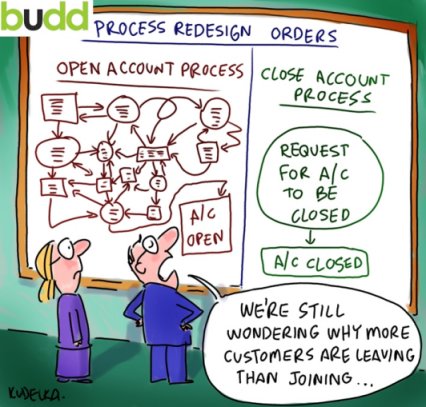OFF-LINE BLOG
"Inside the head of a lifestyle-cruiser" - light stories about this and that.
Blog entries March 3-17, 2010
The Killing Fields Hello from Phnom Penh. Yesterday we came face to face with the Khmere Rouge killing machine. I find it difficult to display some photos I shot at these, once horrific locations, without also trying to give them a historical background. However, I trust that most of you are pretty well aware of what happened in Cambodia in the 1970s. For younger generations I recommend some research for a better understanding of Cambodia today. There are several sites on the web trying to document the Cambodian holocaust. One of them, as a random example, is called Cambodian Communities out of Crises. I haven’t had the opportunity to really check them out, but try and find out for your self.
In short, what happened was, that in 1975 a new Communist movement, called the Khmer Rouge, took over power in Cambodia. They were led by Pol Pot, a lunatic who instituted an extreme and cruel version of fundamentalist Communism that quickly forced the population into farm labor. The regime outlawed money, markets, schools, healtcare and religion. In four years, more than 2 million people (over 20% of the country’s population) died as result of execution, diseas and starvation.
Tuol Sleng prison, or “Security Office 21″, was established by Pol Pot and designed for “detention, interrogation, inhuman torture and killing after confession from the detainees were received and documented”. Today this facility operates as Tuol Sleng Genocide Museum. Almost everybody held at S-21 was later executed at the Killing Fields of Choeung Ek. Detainees who died during torture were buried in mass graves inside the prison grounds, sometimes at an average of 100 victims per day. Tuol Sleng demonstrates the darkest side of the human spirit and stands as a testament to the unthinkable horrors that took place here.
We also visited the Killing Fields (above right), today offcially called Choeung Ek Genocidal Center. A monument rises over the 129 mass graves, where 17,000 men women and children were executed by the Khmer Rouge security forces. Encased inside the monument are 9,000 human sculls found here during excavations. Many of these sculls bear witness that they were bludgeoned to death. Visiting S-21 and the Killing Fields was a chilling experience and as antidote we spent the afternoon admiring the Royal Palace including the Silver Pagoda. The floor of the pagoda is covered by five tons of silver and there is a life-sized solid-gold Buddha, which weighs 90 kg and is adorned with 2086 diamonds, the largest weighin in at 25 carats.
The elephant is an important symbol in this part of the world, in the Royal Palace compound they can be found in many shapes. On the photo (above right) Malla meets a young street vendor, who sold us cold water in the heat outside the palace. Cambodia is truly a country of contrasts. |
Doctor Fish I’m not particularly surprised that there is something fishy about Cambodia. I had kind of been expecting something, but I had no idea what it would turn out to be! Siem Reap after dark is all rock and roll. The action is concentrated to a few blocks around 8th Street, today usually called Pub Street. The first bar opened only 12 years ago, which is difficult to understand when you experience the area today.
Here are probably hundreds of bars and restaurants. The Khmer food is excellent and cheap (2-3 USD per dish) and you can have a draft beer for 50 cents US.
Pub Street area is also where it gets fishy, and I’m not talking about gastronomic extravaganza. Otside several of the bars and restaurants you will find aquarium-like pools where you can dip your tired feet for a relaxing treatment by, yes, Doctor Fish! (Click photo for larger fish) |
Life after Khmer Rouge? Cambodia has gradually recovered from the Khmer Rouge regime, although the psychological scars remain for survivors and their families. Cambodia now has a very young population, and (already by 2005), 75% of Cambodians were too young to remember the holocaust, which ended in 1979. For most people of my generation, Cambodia has been a symbol of something dark and horrible. The Red Khmers, led by Pol Pot, committed probably the largest genocide in history – killing more than 20% of their fellow contrymen. The enormity of this terrible crime is simply impossible for most of us to understand. Sofar on our journey there has been little evidence of the horrific Khmere Rouge era, except for the present undeveloped state of all infrastructure and the apparent poverty, particularly in the countryside.
Today, when we went for a walk in the Old Market area of downtown Siem Reap, we had our first worrying encounters with people who are still suffering because of the old regime. During a couple of hours we were approach by a dozen of crippled persons, who had lost either a leg, or both legs or an arm – either during the civil war, or for stepping on land mines afterwards. We were touched by the dignity that most of these unfortunate souls showed. They try desperately not to appear as beggars and instead try to give us visitors a chance to pretend that we are paying for a service or a souvenir. The man with Malla and me on the photo above is Phung, he is 46 years old and lost his leg on a land mine in 1989 – and he tells us that he has five children to support. I can’t help wondering why he made five children despite his condition. If you would like to see how he presents himself on the sign shown in the photo, please click
.
An other type of encounter, familiar from many other parts of the world, is the mother carrying a nearly newborn child and asking for money. They are here too. I tried to do the right thing by bringing the couple with me in to a store and buying her a tin of milk powder. But I hate myself for suspecting that she will sell the can and get money for something else that the child might not benefit from at all.
However, this blog post is not intended to be a negative one, actually I think that the Kingdom of Cambodia (yes the King is back!) will be developing very quickly. Because: the tourists are arriving and this is probably a good thing as it is the fastest way for a better living for the common people.
I include the following photos of wedding couples, which we encountered at Angkor Wat. I think they look very happy concerning their future! |
Anchor what? Actually it’s name is Angkor Wat, but the brain of a cruiser immediately made a connection. Designated a UNESCO World Heritage Site, the Angkor Archeological Park encompasses an amazing number of millennium-old ruins of the Angkorian-era Khmer Empire (9th to 12th centuries AD). As a whole, this area is in a class with the Pyramids, Machu Pichu and the Taj Mahal. For us, it became a long day, waking up at 4:00 in Kuala Lumpur for an early flight to Cambodia, and more specifically to Siem Reap, the gateway to the ruins. Long before noon, after having been first taken to the wrong hotel, we were already on our way to Angkor Wat, the most famous of the sites. We were riding a tuk-tuk, the local moped version of a motorized rickshaw – actually it is a two-wheel trailer hooked to a moped.
The rest of the day we explored several of the temple sites, including Bayon, Ta Phrom and of course Angkor Wat. This massive temple covers more than 1 km square and the lotus-like towers rise 65 metres from the ground (almost one Helsinki Stadium tower – see earlier blog: The real measure of heights). The walls of the temples are covered inside and out with thousands of bas-reliefs and carvings.
The giant stone faces of Bayon have become one of the most recognizable images connected to classic Khmer art and architecture (photo above, left), but we were particularly amazed by the jungle overgrowth at Ta Phrom, where massive fig and silk-cotton trees are taking over the temple. I’ve been told that this temple was used in the film Tomb Raider. Look at the photo (above right), it’s almost as if that tree was a giant octopus, sliding down from above (click on it). |
South East Asia expedition by land Today we started on our inland trip in mainland SE Asia. The plan is to explore Cambodia, Vietnam, Laos (collectively called Indochina) and Northern Thailand (which used to be part of Siam). There are no direct connections to these places from Langkawi, where we left our yacht Scorpio, so our first connection was a flight from Langkawi to Kuala Lumpur (KL), the Capital of Malaysia. Tomorrow morning we have set the alarm clock to 4:00, as we have to catch a very early flight to Siem Reap in Cambodia. We will try keep you informed of our progress on a daily basis if possible, both here on this Blog and on my FaceBook. |
Prices are right, weather perfect ... We have spent the past eight months in countries where we're getting a lot for our bucks: Indonesia, Singapore, Malaysia and Thailand. Singapore wasn't particularly cheap, but reasonable and in Indonesia, supply wasn't great. On the other hand, prices in Thailand and especially Malaysia are out of this world, and you can find almost any item you might need. Let me give you a few every-day examples. A local sim-card for your mobile phone costs €1.83, a subscription for mobile broadband (3G) for one week is €4.16 and a taxi ride starts at €1.28. A meal at the food stalls and street markets is around €1 and even in the restaurants you can have a several course lunch or diner for less than €4. The prices are so good, we use to joke, that you can't afford to eat at home. A case of beer (Skool) can be found below €6, which is an incredible 25 cents per can, while the bests price I have seen on a bottle of Gordon's gin is €5.42. Even in the bars a beer is usually around 75 cents. We haven't experienced prices like these since the four months we spent in Ecuador and the availability of goods wasn't as good there as here.
Even boating gear and services, which usually get a "reverse discount" on the price tag are relatively affordable in Langkawi, which is a tax free area. From Nongsa Point, our last stop in Indonesia, through Singapore to Malaysia we visited five star marinas and paid less than €10 per day for our 43ft ketch (and much less if you stay longer). More than 10 years ago we usually had to pay €40-50 in Spain and the same in the USA. The major exception concerning prices is the cost for storage on land, which I will comment in a later post. Malaysia also knows how to make it easy for us yachties. There's no restriction for importing your vessel, it can remain here for ever. Travelers get a 90 days visa when entering and you can briefly walk over the border and re-enter with a new 90 days visa when the previous has expired. Thailand is more difficult, you only get 30 days for yourself (60 if you have a visa acquired abroad) and 6 months for the boat. In addition, you cannot leave the boat in Thailand if you want to leave the country for a re-entry (without paying a bond). Last but not least, the weather is perfect (some say too hot, but I guess they haven't heard of shades and fans) and everybody is incredibly friendly. We are planning to leave the boat here in Langkawi for 5 months while we take a vacation back home in Finland. It is going to be an incredibly expensive trip. Helsinki is 7th on the list of the world's most expensive capitals compared to Kuala Lumpur, which is 70th, at level with Delhi and Mumbai (although it really is a first world city). |
Piracy alert in the Malacca Straits
Here in Malaysia, police have assigned seven patrol boats and two airplanes to patrol the straits. The pirates are expected to be acting as fishermen and the incidents are expected to take place in areas were fishing activity is high.
The map above (left) showing potential piracy hotspots is from The Straits Times. The map on the right shows Scorpio’s track in October 2009. Pirate activity has been quite low i the Malacca Straits for several years due to increased patrols and surveillance. The world’s focus in this business has dramatically changed to the east coast of Africa and the “Pirate Alley” along the coast of Yemen in the Gulf of Aden. Although the main targets of the pirates, here as in the NW Indian Ocean always will be valuable the cargo ships, there’s nothing stopping the thugs from trying to get some petty cash from transiting yachts. Better staying alert at all times. |
Feeling Rewarded by the Airline? Recently I checked if I could use frequent flyer miles for a Reward ticket. However, when I look at the break down of taxes pertaining to a
Flying Blue (KLM) Reward ticket I can only shake my head in disbelief.
Or they could think like this: We have budgeted a 10% profit this year, which means that 90% of our turnover consists of costs. Therefore we will charge the frequent flyer 90% of the value of the ticket. But there a problem also with this plan: the airline is probably not making any profit this year, so they would have to charge the full value of the ticket anyway. And as they probably are losing money, you could end up paying more for the Reward ticket than for just buying a regular one? In my case, I would get a 64% discount on the ticket, but somehow I don’t feel particularly rewarded. |
The System is Protecting You March 3, 2010 Now back to the credit card subject. Yesterday I tried to book flight tickets from Kuala Lumpur to Helsinki, return. After filling in the forms on KLM's internet booking site, page after page, I finally arrived at the final payment form, and having completed it with the details of my Amex card, it was time for the scary "hit enter" moment. And what do I read on the next screen?
So, I spend an other 30 minutes, moving back and forth between the pages and hit enter a couple of more times. Same result. When the time is 9am in Finland I place the call to Amex. "Yes we can see that you have tried to pay twice". When I wonder what is wrong they tell me that it was for my own good, "the system wasn't sure that it really was you". I don't buy this argument, I think there is a flaw in the design of the system. If I would have been buying something tangible, and easily tradable, like say, a golden ring, a camera or a radio, ok fair enough. But hey, come on, I tried to buy a flight ticket issued in the same name as the credit card holder! Nobody else than me could ever have used that ticket. And, by the way, why was I told that the payment details were INCORRECT. Because of this message, I unnecessary spent 30 additional frustrating minutes trying to find out what I had done wrong, even though I hadn't done any wrong - why was I not instead immediately told that Amex (for security reasons) didn't approve of the payment?
I gently tried to tell the lady at the other end that this flaw had almost ruined my day, so she could relay some feedback to their it-department, but she kept repeating, "no there's nothing wrong with the system, this is to protect you". |
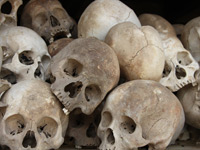
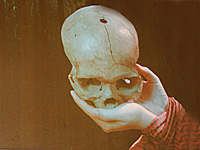
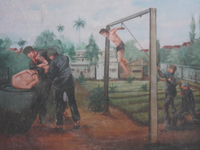
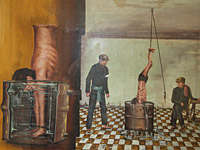
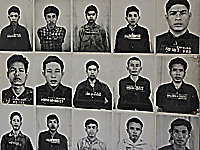
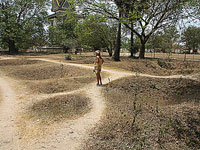
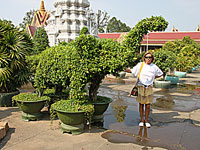
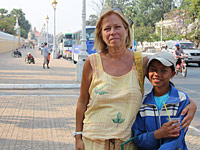
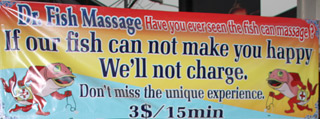
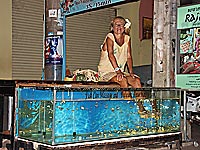
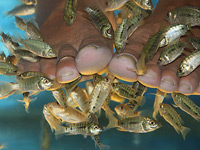
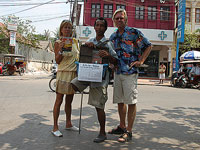
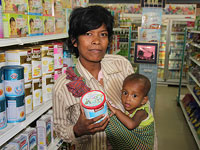

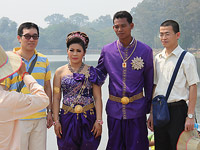
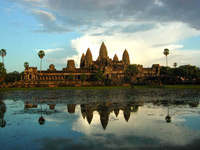
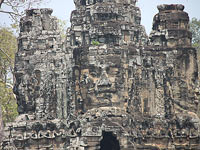
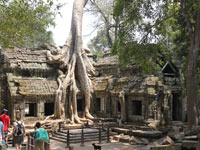
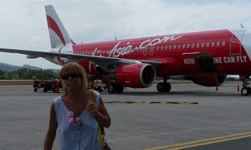

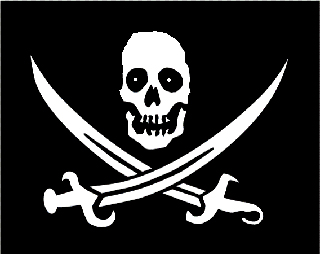
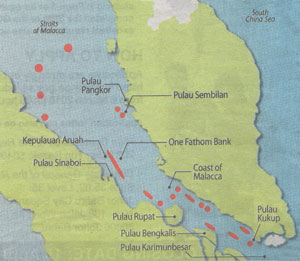

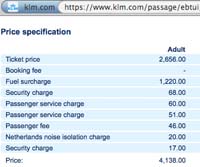 This doesn’t appear fair to me, the airline’s costs for the flight
will not increase by 1,220 because of me using a Reward ticket. The
airline could as well start excluding costs for labour, head office,
rental costs, insurance and whatever.
This doesn’t appear fair to me, the airline’s costs for the flight
will not increase by 1,220 because of me using a Reward ticket. The
airline could as well start excluding costs for labour, head office,
rental costs, insurance and whatever. 
